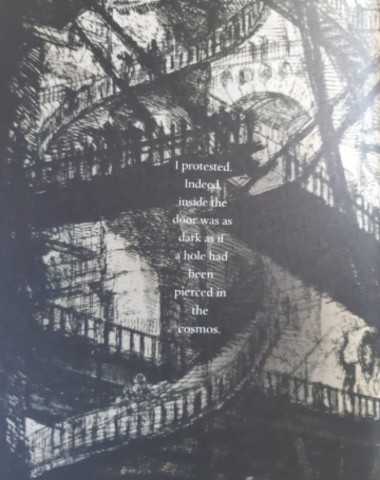To most avid readers, reading comes from the quest of understanding the world, not only the one immediately around you, but the bigger picture, faraway cultures, the shadowy space where reality ends, but thinking does not. The surreal and the magical does not always have to be fantastical. Some of the best examples of such works are the writings by Haruki Murakami.
This Is Here In For You
Listen To The Podcast:
If you love to listen to the book review over reading, or if you want to go through it while doing other activity, here is our Podcast of this review article. Do listen, and share your thoughts with us.
Spotify:
YouTube:
The author has a world-wide recognition and following for the complex setting of his simple and evocative stories that blur the lines of what we experience in reality and how we process those experiences in our minds. He is a prolific writer and we have started to share our views on some of his smaller, shorter stories here at Thinkerviews:
Recently, looking up at a library shelf filled with Murakami’s work, I noticed a small book titled – The Strange Library. This book is story of a boy who “just wanted to go to the library and borrow some books“. So, I promptly borrowed this beautiful novella and now I can share my thoughts on it with you.
| Book Title | : | The Strange Library |
| Author | : | Haruki Murakami |
| Published by | : | Knopf ( 2 December 2014) |
| # of Pages | : | 96 (Paperback) 71; 36690 KB (Kindle EBook) 62 Minutes (Audiobook) |
| Purchase Link(s) | : |
|
Book Cover:
Now this book has been published in variety of beautiful editions, and if you can, do look up the different versions and the illustrations for each one. The book covers of these editions were a great representation of the world Murakami created inside the story and provided a food for thought to all readers.

The Strange Library by Haruki Murakami | Book Cover
The copy I borrowed is a hard-bound copy created in image of old fashioned books. The front page carries a pocket to hold the book catalogue card that was common to libraries in 1980s. The book title is printed here in fonts that look like library stamps and the pocket carries a few stamped dates indicating the borrowing history.
Inside of the book is enriched with multitudes of illustrations as well as images borrowed from old books housed in The London Library. The book carries a lot of stamped imaged inside that would be common to library books all around. A truly, interesting edition created with creativity making it simple and elegant.
Storyline
A boy, name unknown, age unspecified, stops at the city library one afternoon to return his borrowed books – before those are due, and asks to borrow some more. The librarian directs him to a basement room where a scary librarian offers to find him his books. The boy is looking for something on tax collection in the Ottoman empire, and the books he is offered are The Ottoman Tax System, The Diary of an Ottoman Tax Collector, and Tax Revolts and their suppression in the Ottoman – Turkish Empire.
The boy thinks, he’ll check out this impressive collection and get home in time for dinner. But not so, the books must be read inside the library. The sinister old man bullies the boy towards the reading room, where he meets a man clad in sheepskin and in bizarre turn of events, the boy finds himself imprisoned with a ball and chain around his leg inside a reading jail cell. More concerning is the fact that once he’ll finish reading his books, the old man will cut open his head and slurp his brains up, with all soaked up knowledge within it!!!!
Thinking of his mother and his pet starling, the boy tries to get used to this turn of events and starts reading. He receives his dinner from a gorgeous, beautiful girl that can only speak with her hands. The sheepskin man brings him the best fried doughnuts in the world and so nearly three nights pass.

An Illustration from – The Strange Library
The night of new moon is approaching and so the boy plans to escape. He tries to take the Sheepskin man and the girl with him, only to find they are all trapped in maze, at the end of which stands the old man with a scary black dog. Will he ever escape this place?
Views and Reviews
The story told above is simple and yet bizarre, isn’t it? As I read it, it strongly reminded me of dreams. You know when you are dreaming, and it gets more and more surreal and complex as it goes, there are mazes and feeling of being trapped, escape at the end seems more and more unachievable, sometime you even know you are dreaming, but you cannot wake up. That’s how this world feels – like a dreamspace. And you accept, just as the boy accepts, the strange introduction of the sinister old man, the sheepskin man, the jail cell, the outlandish world of tax collection in Ottoman empire, the beautiful girl with no voice, the scary monster of a dog and a starling that grows beyond imagination.
That has always been the gift with Murakami’s prose. He doesn’t built his worlds from a few hundred paras. A few simple sentences bring his magical surreal settings alive and he makes those believable. Here, the translator – Ted Goossen – has also struck the same economical cord and the story flows through this boy’s world like a little stream of water. In the small span we see the boy’s goodness, he has been raised to offer respect to elders, seek knowledge, follow rules, return home in time so as to not worry his mother.
Why do I act like this, agreeing when I really disagree, letting people force me to do things I don’t want to do?
Murakami makes the most of little things e.g., the boy’s appreciation of beauty of his pet bird can be seen reflected in the way he sees the girl or the black dog that bit him becoming a monster with green eyes, jeweled collar, massive legs with six claws in a child’s imagination, his love for his mother in spite of her tendency to over-worry when he is late.
But when you can love, you also feel the loss and the grief. And the first time you come across loss and grief, it leaves strong furrows in the mind. How do you even make sense of what has happened if you lose the only person who is closest to you when you are so young. Life surely than feels stranger and the reality is so subdued that you would wander in a bizarre dreamscape trying to get out of the maze of grief and loss.
Our worlds are jumbled together. Sometimes they overlap and sometimes they don’t.
When you lose a pet, very often you just get a new one. You don’t forget the one you lost, but a new chick or a new kitten or a new puppy brings with it a new beginning. It is one way to teach children about the cycle of love and loss. But it is not so easy with losing family. Most people will tell you that life must go on, that you have to carry on and move on, but how you do manage to carry on after loss is a uniquely individual process.
The world follows its own course. Each possesses his own thoughts, each treads his own path. So it is with your mother, and so it is with your starling. As it is with everyone. The world follows its own course.
And sometimes the hardest part is the sense of bewilderment at having no say in events. When a mysterious illness strikes or an accident happens and suddenly nothing is same. But sometimes, events move slowly and for rest of your life, you are left to question your own choices:
The tricky thing about mazes is that you don’t know if you have chosen the right path until the end. If it turns out you were wrong. its usually too late to go back and start again.
While your journey through this short novella will probably inspire similar observations and your own interpretation of the symbolism threaded throughout this story, it is only at the end, that you discover the terrible grief and loneliness of the boy:
I lie here by myself in the dark at two o’clock in the morning and think about that cell in the library basement. About how it feels to be alone, and the depth of the darkness surrounding me. Darkness as pitch black as the night of the new moon.
The structure of the book, especially illustrations that are inherent part of the book in bringing the symbolism alive are also worth mentioning. Unlike other children’s illustrated books where illustrations are part of the story, here, these add to the atmosphere of the surreal world, rather than just exhibit the story, and the reading experience is so much more enhanced with those.
Summary:
A thought provoking novella that speaks of loneliness and grief in the surreal world of dreams.
ThinkerViews Rating:
Around 8 stars out of 10.
Quick Purchase Links:
- Buy - The Strange Library by Haruki Murakami - Paperback - Amazon IN
- Buy - The Strange Library by Haruki Murakami - Kindle EBook - Amazon IN
- Buy - The Strange Library by Haruki Murakami - Audiobook - Amazon IN
- Buy - The Strange Library by Haruki Murakami - Paperback - Amazon US
- Buy - The Strange Library by Haruki Murakami - Audiobook - Amazon US
Over To You:
If you already have read the book do share your remarks and thoughts via comments below. Does this review help you in making your decision to buy or read the book? Do not forget to share this article with your friends over various social networks. Please follow/subscribe us on various Social networks like Twitter, Facebook, YouTube, Spotify, Amazon Prime Music, Audible, and others. And yes, you may like to subscribe to our RSS feeds to get latest updates for the site to land right in your mail box.
 ThinkerViews – Views And Reviews Personal views and reviews for books, magazines, tv serials, movies, websites, technical stuff and more.
ThinkerViews – Views And Reviews Personal views and reviews for books, magazines, tv serials, movies, websites, technical stuff and more.



